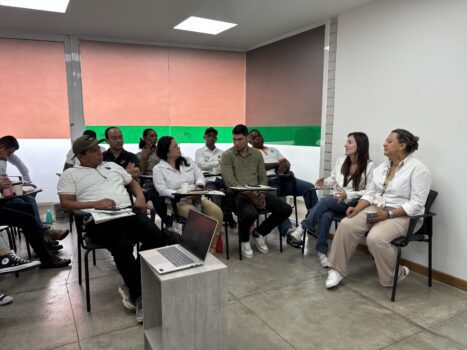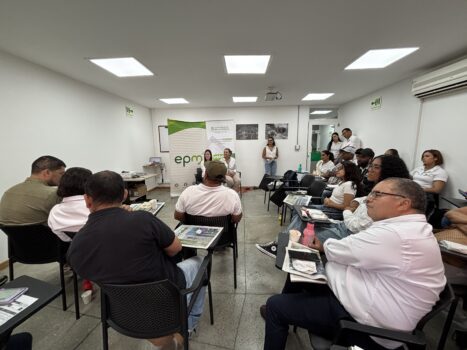EPM Exploring Green Hydrogen Production in Colombia’s Urabá Region
With the participation of the academic, governmental, business, and community sectors, EPM installed the Urabá Green Hydrogen Technical Roundtable, a space for dialogue and joint work to explore the challenges and possibilities of this clean energy source in the Antioquia subregion.
The roundtable arises as a response to the convergence of interests and purposes between EPM and representatives of local governments, academia, and the banana, cocoa, banana, palm and agricultural sectors in general, interested in exploring the potential for green hydrogen production in the Urabá region of Antioquia, from the use and transformation of the residual biomass generated by Urabá’s agribusiness.

EPM hired the University of Antioquia for the studies. Photo credit: EPM.
To this end, EPM signed a contract with the University of Antioquia to lead the studies to establish the potential of biomass from the main agro-industrial activities in the Urabá subregion for the production of green hydrogen and/or its derivatives, including actions such as:
- The constitution of a relationship plan with different actors in the agro-industrial sector of the Urabá region is needed for the socialization of the initiative.
- Technical visits in the area are carried out to characterize the biomass, thus determining the potential and viability of these to produce green hydrogen and/or its derivatives.
In September 2021, Colombia launched the 30-year Hydrogen Roadmap, contemplating that its implementation will require a significant public and private investment effort for the development of infrastructure, transport, and end-uses of multi-emission hydrogen.
Subsequently, the EPM Group drew up its 2022-2050 Roadmap for the production of green hydrogen that includes energy transition, digital transformation and circular economy, always thinking about the development and well-being of communities and strengthening the development of skills and innovation based on clean and renewable energies, which can be scalable to projects that allow the use of hydrogen locally and internationally.

The hydrogen would be produced from residual biomass from agribusiness. Photo credit: EPM.
Thus, in February 2024, the pilot for the production of green hydrogen (H2V) began at the Aguas Claras WWTP (biofactory), located in the municipality of Bello, north of the Aburrá Valley. The pilot, which is being carried out by EPM and Aguas Nacionales, a subsidiary of the EPM Group, allows the production of 1,800 kilograms of hydrogen per year and is in the process of expanding hydrogen production to up to 3,600 kg/year. The energy is already used for some internal processes of Aguas Claras.
Connected to the region
Since 2017, the EPM Group has been implementing the Urabá Territorial Integration Model (MIT), a technical agreement that strengthens the role of the EPM Group as a convergent actor in the region, aimed at participating and strengthening the various scenarios of inter-institutional articulation to team up for the well-being of its inhabitants and enhance the capacities installed in the area.

EPM and Aguas Nacionales advance in green hydrogen pilot in Aguas Claras. Photo credit: EPM.
Among the 13 interaction factors of MIT are: Climate change, energies, alliances and networks, socioeconomic leverage of the territory and provision of solutions, which is why this project represents an advance in the implementation of MIT Urabá.
Likewise, the project is aligned with territorial initiatives such as the Climate and Peace Plan 2040, a document built by more than 300 participants and 105 public, private, and civil society organizations, and which has the leadership of Corpourabá and Cordupaz for its implementation in the territory.
This space to build a team around hydrogen is also aligned with the management of the Social Innovation Platforms Table of the University-Business-State-Society Committee (CUEES) Urabá, led by EPM, and from which this type of initiative serves to add capacities, resources, and knowledge from academia, government, unions, and society, with the same purpose: the consolidation of a sustainable Urabá.
Photo credits: EPM.



























